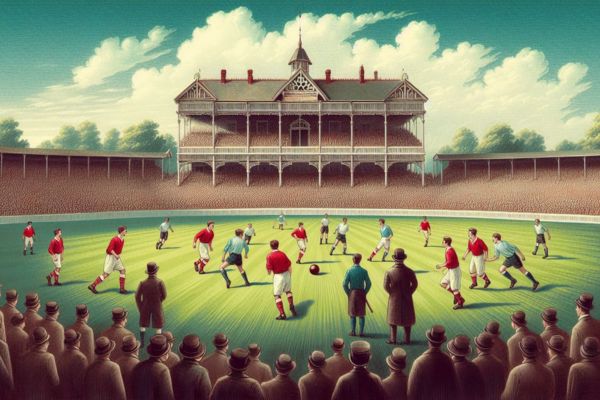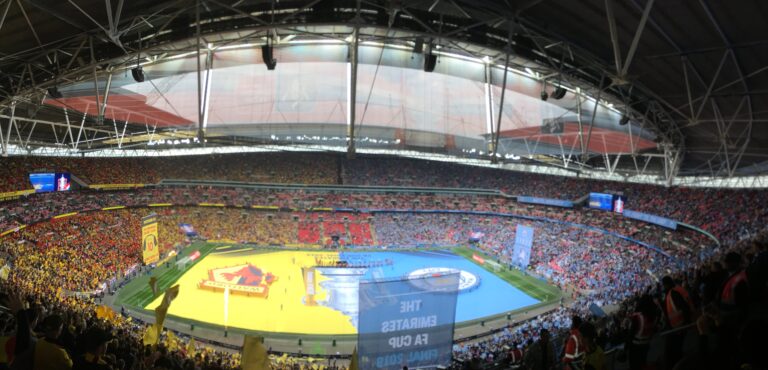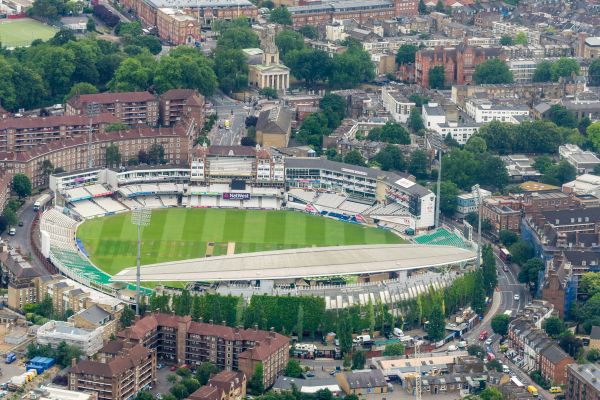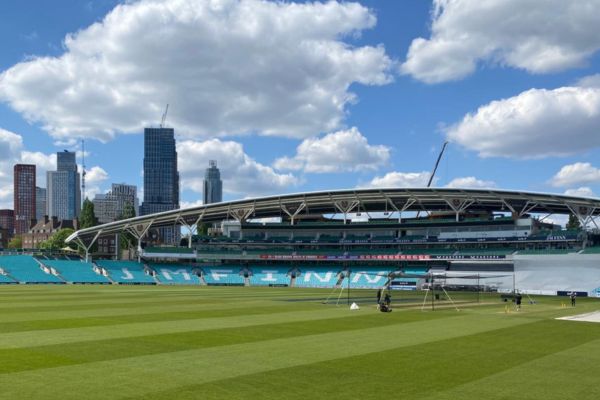Australian spin bowler Nathan Lyon strides in with his trademark rhythm, arm raised high as he prepares to deliver another of his deceptive deliveries. The ball zips through the air toward the pitch at The Oval, just in front of Indian batsman Mohammed Siraj. Siraj eyes it, leans into a hook shot, and sends the ball skyward. For a split second, it looks bound for the boundary—but instead, it lands safely in the hands of Australian fielder Scott Boland. Wicket taken. Game over.
With that final catch, Australia secured the 2023 ICC World Test Championship at one of cricket’s most iconic stadiums: The Oval in London.
But as fans erupted in celebration that day, few likely realized that the very field hosting the biggest match in world cricket had once staged some of the most historic football moments ever recorded. Long before Wembley took the crown, it was The Oval that carried football’s early finals and internationals. Yes, this cricketing cathedral was once the beating heart of English football.
Before Wembley, There Was The Oval
While The Oval is best known as a legendary cricket venue, its role in the early development of football is often forgotten. Decades before purpose-built football grounds dominated the landscape, The Oval served as one of the sport’s most important stages. From hosting the first-ever FA Cup Final in 1872 to staging the earliest unofficial international matches between England and Scotland, it was at the very center of football's formative years.
The First FA Cup Final: Where It All Began

The FA Cup—now a global footballing tradition—had its humble origins at The Oval. On March 16, 1872, Wanderers FC faced Royal Engineers in the inaugural final. Wanderers claimed a 1-0 victory, thanks to a goal from Morton Betts, who played under the pseudonym “A.H. Chequer.”
This wasn’t just the beginning of a tournament—it was the birth of a footballing legacy. The FA Cup would go on to captivate generations of fans and produce countless unforgettable moments. But it all started on a cricket pitch.
Early International Matches: England vs. Scotland (Sort of)

Between 1870 and 1872, before international football was officially recognized, The Oval hosted a series of representative matches between teams billed as “England” and “Scotland.” Organized by C.W. Alcock, secretary of the Football Association, these games featured players mostly based in London and the south.
While not officially sanctioned by FIFA (the first official international was played later in 1872 at Hamilton Crescent in Glasgow), these fixtures were vital in laying the foundation for international football. The Oval’s role in staging them adds another layer to its historical importance in the global game.
Why The Oval Stopped Hosting Football
As football boomed in popularity, it outgrew the shared venues of its youth. The sport needed rectangular pitches, larger terraces, and stadiums designed specifically for its pace and spectacle. The Oval, with its circular layout tailored for cricket (and later, Aussie Rules exhibitions and even baseball), gradually stepped aside.

Eventually, venues like Wembley Stadium took over the mantle for FA Cup finals and international clashes. But The Oval’s place in football folklore was already sealed.
The Lasting Legacy of a Dual-Sport Giant

Today, The Oval is synonymous with Ashes battles and cricketing drama—but its legacy goes far beyond the boundary rope. Hosting the first FA Cup final and some of the earliest England vs. Scotland matches, it helped football transition from a niche pastime to a national obsession.
On a Personal Note

I've been to The Oval a few times—always for cricket. The only non-cricket event I ever saw there was an AFL exhibition match. The ground's oval shape suits sports that follow that form, unlike football which thrives on a rectangle. Just like stadiums with running tracks—think Rome’s Stadio Olimpico—the setup just doesn’t serve the sport as well.
So while I don’t see football returning to The Oval any time soon, its role in the sport's early rise deserves to be remembered. It's a fascinating chapter in football history hiding in plain sight.
Want More Forgotten Football Stories?
Check out our post on The Only Stadium to Host Two Unique Finals — where football’s biggest tournaments collided in one legendary ground.
